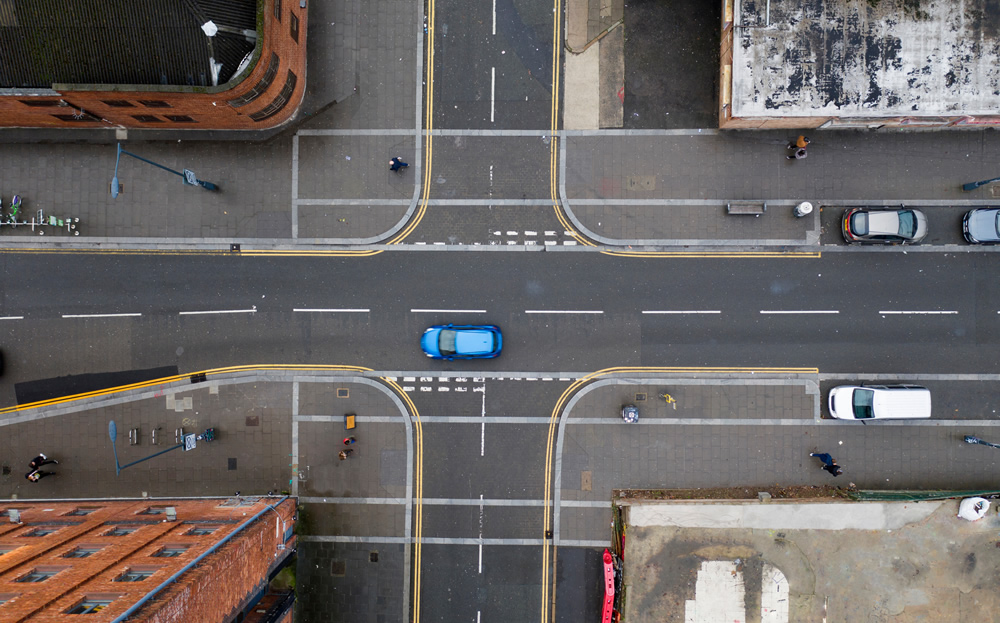
When you’re learning to drive, there are many different situations and techniques to become acquainted with. When you’re out on the road you’ll need to keep these in mind, addressing scenarios and employing the skills you’ve acquired during the course of each journey.
One of the most daunting elements of learning to drive for many new learners is the junction – especially busy ones. There are several different types of junction (5, to be exact) and each one requires a different approach. Even some seasoned drivers still have trouble understanding and navigating junctions – especially in unfamiliar areas.
Whilst junctions may feel confusing at first, over time you’ll begin to naturally understand what to do and how to approach them when driving. It’s important to be aware of the different types of junction because by nature, they can be unsafe if you navigate them improperly due to the presence of traffic coming from different directions. Understanding these road layouts inside-out and being fully prepared when you encounter them will help you to become a more confident and competent driver.
Today we’re taking a look at crossroads – what they are, how to navigate them safely and some tips to bear in mind when you encounter one when learning to drive (and after you’ve passed your test).
What is a crossroad?
A crossroad is defined as two roads crossing one another. Usually there is a major road being intersected by a more minor road, but this isn’t always the case – sometimes a crossroads may be comprised of two major roads. That’s why in the US they’re known as ‘intersections’.
Crossroads are difficult to define because each one will have a different layout and varying instructions on how to proceed. For this reason it’s really important to be aware of any signage, traffic signals and road markings which will inform your approach art a crossroads.
Types of crossroads to be aware of
There are two main types of crossroads in the UK to be aware of – with some sub-types within each category.
Marked/Controlled Crossroads:
As the name suggests, marked crossroads will have signage clearly displayed as you approach to warn that a crossroads is up ahead. The type of signage varies depending on the location and size of the crossroads, and which direction you are approaching from. For example, if you are approaching on a major road, you may see a crossroads sign making you aware that vehicles may be trying to merge onto the main carriageway. If you’re approaching from a minor road, you may see a ‘give way’ sign to signal that vehicles on the major road have right of way.
Larger crossroads tend to be controlled by traffic lights – others may also have a yellow box with criss-cross lines painted in the centre. This is a box junction – you must not enter the yellow box unless the exit lane is clear for you to proceed without stopping.
Unmarked/Uncontrolled Crossroads:
Whilst most major crossroads will be clearly marked, within rural or suburban areas you’ll often come across unmarked crossroads. Traffic here is generally moving more slowly (or is less busy) but extra caution must be exercised as there is no signage to tell drivers who has right of way. This is because at an unmarked crossroads no-one has right of way, so you should never assume that an oncoming vehicle will allow you to proceed first. At these types of crossroads you’ll need to approach slowly (or may need to stop altogether) and if other vehicles are present, practice caution and awareness in order to navigate the crossroads safely.
As mentioned above, there are some other types of crossroads to be aware of which could fall within either of the above categories. These include staggered crossroads, where the roads don’t intersect perfectly. These can be more challenging to navigate, especially if they are unmarked and require interaction with other drivers.
Turning at crossroads
Every crossroad is different – but generally if you are turning (rather than driving straight across) you’ll need to use the ‘nearside rule’ or ‘offside to offside rule’. Offside refers to the driver’s side, whilst nearside refers to the passenger side of your vehicle. Which you use depends on the direction you are moving in – and because you are co-operating with other vehicles and positioning slightly differently each time due to the size and layout of different junctions, it can take some time to get accustomed to approaching crossroads this way. Practicing these rules can feel uncomfortable at first, especially at a busy junction, but it’s crucial to master them in order to navigate crossroads and other types of junction safely.
Who has priority at crossroads?
Normally you’ll be able to use signage to understand who has right of way at a crossroad – but in the case of an unmarked crossroad nobody has priority, so it’s important to proceed with caution and co-operate with other drivers to navigate the junction safely. Even where you have right of way, you must approach slowly and cautiously in case other road users fail to follow the instructions or obstruct the road ahead.